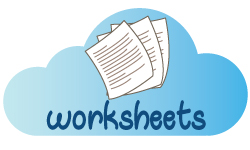Tag Questions Explained with Examples
- Grammar Lessons >
- Tag Questions
Overview to Tag Questions:
- Introduction to Tag Questions
- What Are Tag Questions?
- Examples of Tag Questions
- The Verb in the Tag
- Purpose of Tag Questions
- Tag Questions for Polite Requests
- The Subject of a Tag Question
- Basic Rule of Tag Questions
- When Have Is the Main Verb
- Special Rules in Tag Questions
- Tag Questions for Adverbs Like Seldom and Hardly
- Tag Questions for Imperatives
- Tag Questions for I am
- Tag Question for Let’s
- Tag Questions for There Is, There Are, There Will Be
- Right? and Yeah? – Universal Tags
Introduction to Tag Questions
We hear tag questions every day, don’t we? Whether it is to initiate a new conversation or to add further gusto to an already-started one, tag questions serve a large variety of purposes in English. It’s not uncommon for business bosses and managers to resort to tag questions when they want their orders and commands to sound as less unpleasant as possible. What’s more? Add these beautiful language tools to your request sentences, and you will see your request fulfilled almost immediately and incontestably. In this lesson, we are going to take a closer look at tag questions.
What Are Tag Questions?
Tag questions, also called question tags, are little questions added at the end of statements. Having a tag question turns the statement into a question. Here’s the basic rule for tag questions – a positive statement has a negative tag question and a negative statement has a positive tag question.
Examples of Tag Questions
Edward lives in New Jersey, doesn’t he?
Claire is a science student, isn’t she?
Life is a short yet eventful journey, isn’t it?
The Wilsons aren’t selling the property, are they?
We aren’t traveling today, are we?
Stacy must attend the wedding, mustn’t she?
I’m going to get a detailed plan, aren’t I?
The Verb in the Tag
If the main clause contains an auxiliary, a modal verb, or the verb to be, it’s pretty straightforward to use the verb. All we do is simply take it from the main clause and put it in the tag question.
Examples:
You’re in some corner of some city in some country, aren’t you?
We don’t have access to the food she cooked, do we?
We should wisely choose who we befriend, shound’t we?
In sentences where there are no auxiliary verbs, we use do / does / did just like when we make a normal question.
Mom worked as a nurse during the 1990s, didn’t she?
You go jogging every day, don’t you?
Lisa cooks and eats, doesn’t she?
Purpose of Tag Questions
A more common tool in speaking than writing, question tags are primarily used to make statements sound like questions. The idea behind using a tag question is our expectation that the listener will agree with what we are saying. Below is an interesting use of tag questions with examples.
Tag Questions for Polite Requests
The problem with requests is that many a time they don’t go down well with the people we make them to. It’s important that we sound as polite as possible while we request someone for some information or to get something done by someone. Tag questions help make this process super-easy.
Examples:
You wouldn’t know where the post office is, would you?
We could ask the question the normal way and say, "Where is the post office?". The problem is this is not very polite and may not attract a quick, favorable reply from the person.
Here’s another way we could phrase this request – "Do you know where the post office is?". It makes quite a leap from the first sentence and sounds far more polite and thoughtful. The problem that persists, though, is it is not polite enough.
Now, if we introduce a tag question in the scenario and say, "You wouldn’t know where the post office is, would you?", it is going to be music to the ears of the person. Not only will they feel very positive about us, but they will also immediately tell us all that they possibly know about the whereabouts of the post office.
More Examples:
You don’t know where I can buy a nice pair of sports shoes, do you?
You couldn’t help me solve this problem, could you?
The Subject of a Tag Question
Most of the time, the subject in the tag question is exactly the same as the statement, or it refers back to the subject in the main sentence.
Examples:
We have a tough task ahead, don’t we? (The subject in the tag question – we is exactly the same as that in the statement –we.)
You are a little late today, aren’t you?
Anthony and Joshua go to the same fitness center, don’t they? (The subject in the tag question – they – refers back to the subject of the statement – Anthony and Joshua.)
Basic Rule of Tag Questions
Here is the simple basic rule that every tag question follows. If the statement is positive, the tag question is negative. If the statement is negative, the tag question is positive.
Examples:
Annette and Wendy are sisters, aren’t they? (A positive statement followed by a negative tag question)
Annette and Wendy aren’t sisters, are they? (A negative statement followed by a positive statement)
Work starts tomorrow, doesn’t it? (A positive statement followed by a negative tag question)
Work doesn’t start tomorrow, does it? (A negative statement followed by a positive statement)
It was raining cats and dogs last night, wasn’t it? (A positive statement followed by a negative tag question)
It wasn’t raining cats and dogs last night, was it? (A negative statement followed by a positive statement)
When Have Is the Main Verb
If "have" is the main verb of a sentence, we can form its tag in two different ways. While in American English the more accepted tag for such sentences is "don’t or doesn’t + the subject+?", in British English, it is "haven’t or hasn’t + the subject + ?".
Examples:
The Andersons have a big bungalow, don’t they? (American English)
The Andersons have a big bungalow, haven’t they? (British English)
Kevin has a new bike, doesn’t he? (American English)
Kevin has a new bike, hasn’t he? (British English)
Special Rules in Tag Questions
Although the basic rule of tag questions — that a negative tag question follows a positive statement and a positive tag question follows a negative statement — still prevails, not everything is as simple as it looks in tag questions. We are now going to dig deep into some important, different rules, which every student who wishes to master the topic of question tags must know.
Tag Questions for Adverbs Like Seldom and Hardly
Sentences that contain adverbs such as seldom, hardly, barely, rarely, and hardly are followed by positive tag questions. The idea is these words are negative in meaning although they appear to be positive in construction.
Examples:
The hall is never open for the public, is it?
Zachary barely speaks Chinese, does he?
People here rarely care about each other, do they?
Martin is seldom at home, is he?
Tag Questions for Imperatives
Most of the time, students have a tough time figuring out the correct tag question for an imperative sentence. Imperative sentences are sentences that give orders or invitations. The tags often used with imperatives are "will you?", "won’t you?", "can you?", "can’t you?", or "would you?". Now, do we use each of these for every imperative sentence as we please, or should we stick to certain rules while picking one from the list? The answer is it all depends on how more or less polite or friendly our tone is.
Examples:
Come on in, won’t you? (A polite invitation)
Help me prepare the salad, can you? (A quite friendly request)
Help me prepare the salad, can’t you? (A quite friendly request, but apparently with a little bit irritation)
Shut down the computer, would you? (A quite friendly request)
Stop talking, will you? (An order, less polite)
Please, however, note that a negative imperative only takes a positive tag question.
Examples:
Don’t rush through it, will you?
Don’t get upset, will you?
Tag Questions for I am
The tag question from "I am" is "aren’t I?". Although this is an ungrammatical construct in general English, it is accepted in tag questions.
Examples:
I am part of the team, aren’t I?
I am talking to Mr. Joseph, aren’t I?
Tag Question for Let’s
Sentences with "let’s" are also considered special while forming tag questions. The question tag for such sentences is "shall we?".
Examples:
Let’s go out for dinner today, shall we?
Let’s get the work done first, shall we?
Tag Questions for There Is, There Are, There Will Be
For sentences with impersonal constructions such as "there is", "there are", and "there will be", which show existence, we use "isn’t there?", "is there?", "aren’t there?", "are there?", and so on as tag questions.
Examples:
There is a shoe store nearby, isn’t there?
There isn’t a shoe store nearby, is there?
Right? and Yeah? – Universal Tags
In very informal English, it is acceptable to use the words – right and yeah – as simple tags.
Examples:
So, you’re not coming to the party, right?
Sharon will be here by 6, yeah?
Remember these words are used only in very informal cases and never otherwise.

Hone your skills using our free printable Tag Question Worksheets.

